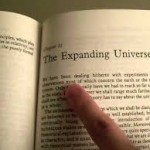speed learning -2
Skill 1 —
— SURVEYING المسح
Skim reading:
Shift reading; float on page, looking for the topic discussed (what?) Name of persons (who?) place (Where?), Time (when?) These names are usually overprinted, bold or capitalized for easy visual recognition.
while you are SKIMMING and questioning.
The most difficult questions are how and why ? You need all skills to answer those and to keep your mind alert with answers ® why? Include list of causes not only in one paragraph ® skim select a word or 2 from each paragraph ® may be numbered list is all your needs
skill 2
Speculation
(CONSIDERATION)(PROPOSAL) (IMAGINING) (PREDICTION):
Is the most surprising tool, simple skill as if like speculating new neighbor or new country, quickly organize and frame new information?
How done?
Read information
®predict more
® give answers
® don’t be afraid for wrong guess
® Seek new information
® Recollect yourself.
STUDY READING (SR):
SR <Skim Reading
Fast answers® Collect isolated facts for questions ® Arrange them in sequence to answer How and Why?

4 Steps for study reading
- Gather data
- Sorting facts
- Measuring facts on basis of your past knowledge
- Decide what to be stored? Reject needless!
REVIEW for then:
1- survey ® 8 keys
2- Purpose questions 5 Ws and How?
3- Speculate?
What is the writer, will give as answers to your questions = frame work for your storing new information = Helps to learn
4- skim rapid answers provided by writer ® paragraph reading
Study reading is like skim reading in the first 2 steps but it requires more evaluation and more analysis!
Showed be
Slowest + In depth + critical analysis + interpret + Evaluate + judge + reflect on information. It is vital for making decision
It is also for answering more complicated questions than skim reading does how and why? Your speed will be less but it isn’t necessary to accept all of the author talk.
¨ CRITICAL Reading:
Judge about the writer’s premises views. Conclusion ” Take the whole elephant in one bite”.
Survey + Paragraph reading + questioning + detective attitude is it logic is it truth …Judge
SKILL 3
PACING:
(RATE) (STEP)
Hardest, break old habits and form new
Adult normal rate is 250 word /minute ® by pacing 600 -1000 word per minute
Mind is faster than eye, teach your eyes move quicker than it is and then quickest word by word or pacing
|
The adolescence is a period of transition from childhood to adulthood. i.e. 11-12® 19-20. Within this period the adolescent undergoes sexual maturity and establishes an identity as an individual apart from the family. During puberty there is a rapid physical maturation, also sexual reproduction system maturation over 3-4 years i.e. able to reproduce. Menarche is the first menstrual period , ovulation starts 1 year after menarche also boys have the first seminal fluid which process no sperms then increased gradually.
|
e.g. word by word reading is that your eye lies on each word
But reading by pacing there is a zone to glide on, this reduces the reading time by half but comprehension not by half .. Why? Because thinking is beyond things to see increase learning and memory, ® think more and see less glide over words and be sure that first 50 -100 times it will be frustrating and unable to comprehend never mind and try to practice more you must achieve this hardest skill.
The next figure shows you clearly how can you limit the page size and pace over words. The page could be less than half of its original size and by practice you can comprehend the more.

Prepare your book for pacing:
The book upright
® Opened
® turned
Technique:
- Put the book over firm surface,
- Use your hand as a pacer, move fingers as pointer, or use a card 3*5″ to keep eyes move down not across the line of the print. At the end of the page remember any words stacked to your mind; don’t give up by practice.
Make pauses to organize ® Practice and Practice

HENCE THE STEPS ARE:
Þ Prepare the book
Þ Survey by 8 keys
Þ Skim
Þ Question How 5 Ws?
Þ Speculate , imagine and predict answers and correct yourself
Þ Read Critically
Þ Pace in the middle zone
READING PROFESSIONAL JOURNALS:
Look in order for
- The date
- ®skim the contents
2. Choose for reading of short articles
- Survey bold headings
- skim read the title, date , author , reference , country of origin
- 1st and last sentence
- set questions and speculate
Feature articles:
Survey ® skim title, subtitle and date ®skim read the abstract ® read author name and professional affiliation (association)
Set purpose questions ® Answer and speculate ®set review what you have learnt if…
|
|







